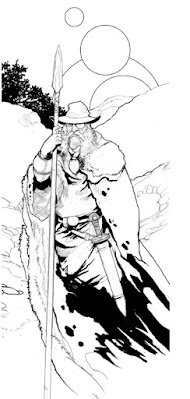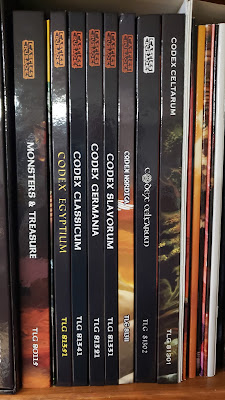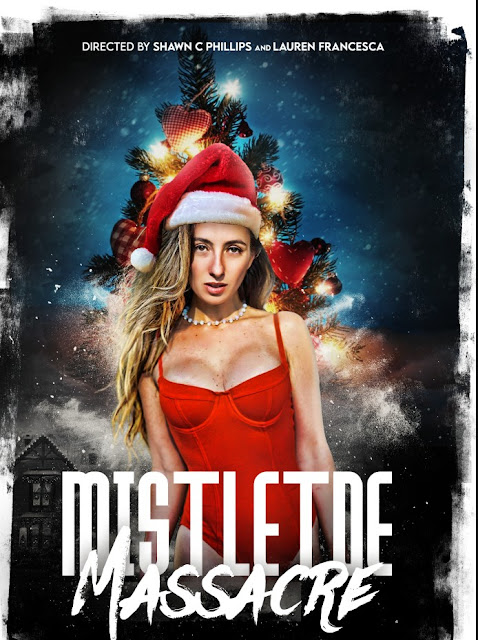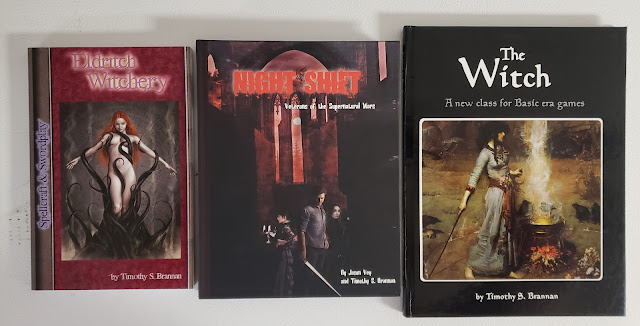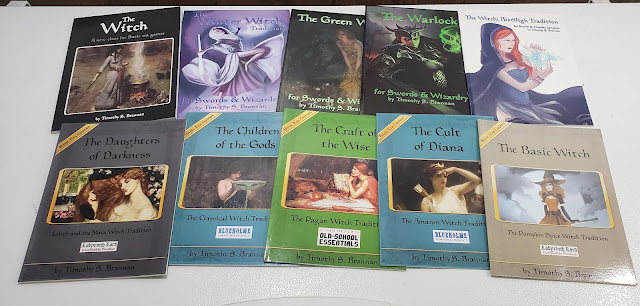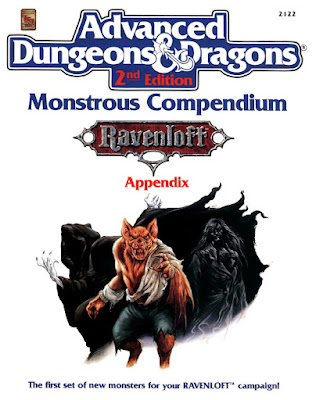Castles & Crusades Codex Nordica
For this book, I am reviewing the PDF and hardcover edition of this book.
The book is 146 pages with color covers and black & white interiors. The art is up to the high standards you should expect from Troll Lords with plenty of evocative art from Peter Bradley. Like the other books in this series, this one was written by Brian Young, who has the educational background to tackle these books.
Norse myths are some of my favorites and rarely have they been more in vogue. Young makes it clear that this book is a game guide to myths, legends, and history of the Swedish, Danes, Norse, and the other peoples of Scandinavia and not a full recounting of history, myths, and/or legends.
Chapter 1: History & Cosmology
This chapter gives us both the real-world historical background of the lands and the people of the area. This also covers the basic myths. It will not replace a history text or a book on Norse Mythology, but it is a great overview for a gamebook. This book is likely better researched than most game accessories you will find.
Chapter 2: The Nine Worlds
This takes the material from the previous chapter and some more to build on a game world of the Nine Worlds of Norse myths and how they could work in Castles & Crusades. Each world is covered, in as much detail as can be provided, which also includes what random creatures can be found. My favorite bits are the two maps that include the Viking colonies and migrations across Europe.
Chapter 3: Magical Beings & Monsters
I would be tempted to say that this chapter is worth the price of the book alone, but while this is true there is a lot of great stuff in this book. But seriously this chapter is a lot of fun. There are nearly 40 creatures of varying degrees of familiarity to D&D/C&C players. Some are new enough to be quite fun. Since the format is for Castles & Crusades they can be easily converted to AD&D, D&D5, or any OSR game of your choice.
Chapter 4: Wizardry & Enchantments
This chapter is the most "Norse" of all of the ones in the book if I may be so forward. It covers magic in its Nordic version or Seiðr. Since war is the realm of men, magic belongs to women. There are two new character classes, the Seiðkona, an Intelligence-based sorceress or more accurately, a "Magic-user" and the Völva or Vǫlva, a Charisma-based prophetess who is quite similar to the notions of a "Witch."
The Seiðkona uses Intelligence as her primary ability and casts the same spells and magic as the Wizard does. If she had used Charisma, I would naturally compare her to the Sorcerer of D&D3/5. Though given her role, Intelligence (or maybe even Wisdom) is the proper choice here. This is a class that is very much part of the mythology of the world she is in. She has access to the Wizard's spell list in C&C.
There is also the Völva, which is the clerical counterpart to the Seiðkona. This class also serves the role of a priestess and uses a distaff. Her gift is divination and prophecy. So by means of a rough comparison, she is more similar to the Oracle class in Pathfinder. She uses the Cleric's spell list until 5th level and then can split between Divine and Arcane magic.
Also, this chapter covers the runic magic system from this world. The runes are used along with the traditional magic powers (aka Spells).
Chapter 5: The Gods and Giants
This chapter covers the gods of the Nordic lands as well their primary adversaries the Giants. Here are names that will be familiar to nearly everyone who has ever played D&D or even watched a "Thor" movie or A&E's/AAmazon's "Vikings." There are similarities with the names found in the Deities & Demigods, but enough differences that readers should be sure to attend to the details.
Here the tale is more on the side of myth and legend rather than history. We learn of the Æsir and the Vanir; the gods and goddesses of the Nordic people. Also covered here in more detail than other gamebooks are the Giants and "other evil beings" spelling out the role Giants have in this mythology. They are more akin to the Titans of Greek or even the demons of other myths. You will not find stat blocks here though. Gods are not "epic-level monsters" to be fought; least of all by the likes of player characters.
Chapter 6: Warriors & Battlecraft
Magic and gods are great, but the world is made of warriors. This chapter covers the various warrior types and additions to the basic fighter of Castles & Crusades. The "upgraded" fighter includes basic warriors, elite warriors, and shield maidens. New classes include the Berserker, who is a Charisma-based fighter, and the Giant Killers (more traditionally Strength-based).
There are some details on fighting styles and weapons unique to this area as well.
Chapter 7: Castle Keeper Info
This chapter details running a Castles & Crusades game in the Nordic lands during the time of these myths and stories; aka the Viking Age. Here you can learn about society, laws, and the people that make it work. Of course, sea voyages are covered and various types of boats were used.
There is a section on poets and Kennings. It makes me wish they had included more for Bards here other than a brief mention that Skalds are Bards. But I guess this works. Names and their importance is covered with examples.
Most importantly there is a section on the Eddas (Prose and Poetic) and how they can be adapted to a game.
Chapter 8: The Precious Works
"The dwarves of lore made mighty spells," Tolkien told us in The Hobbit, but the dwarves he was thinking about likely were the Sons of ĺvaldi rather than the Children of Durin. Here we learn of the great magical artifacts of the Nordic myths including Gundnir, Skidbladnir, Draupnir, and Mjölnir.
Save for monsters and classes, the vast majority of this book is fairly neutral in terms of game rules. What does that mean? It means that you could easily use this book with AD&D, D&D 3 or 5, or an OSR game of choice. Of course, it works the best with Castles & Crusades, but the book is such a good resource I would hate to see it missed by people that do not play C&C.
Brian Young has a unique combination of Ph.D. level research and game design and writing credit to bring a series like this to life and make you want to play exclusively in the world he describes. Many have tried over the years, but I feel he has achieved the rare success of balancing the needs of mythological research and game design.
I highly recommend this book for anyone that wants to add a little bit of Norse myth to their games. And really who wouldn't?


